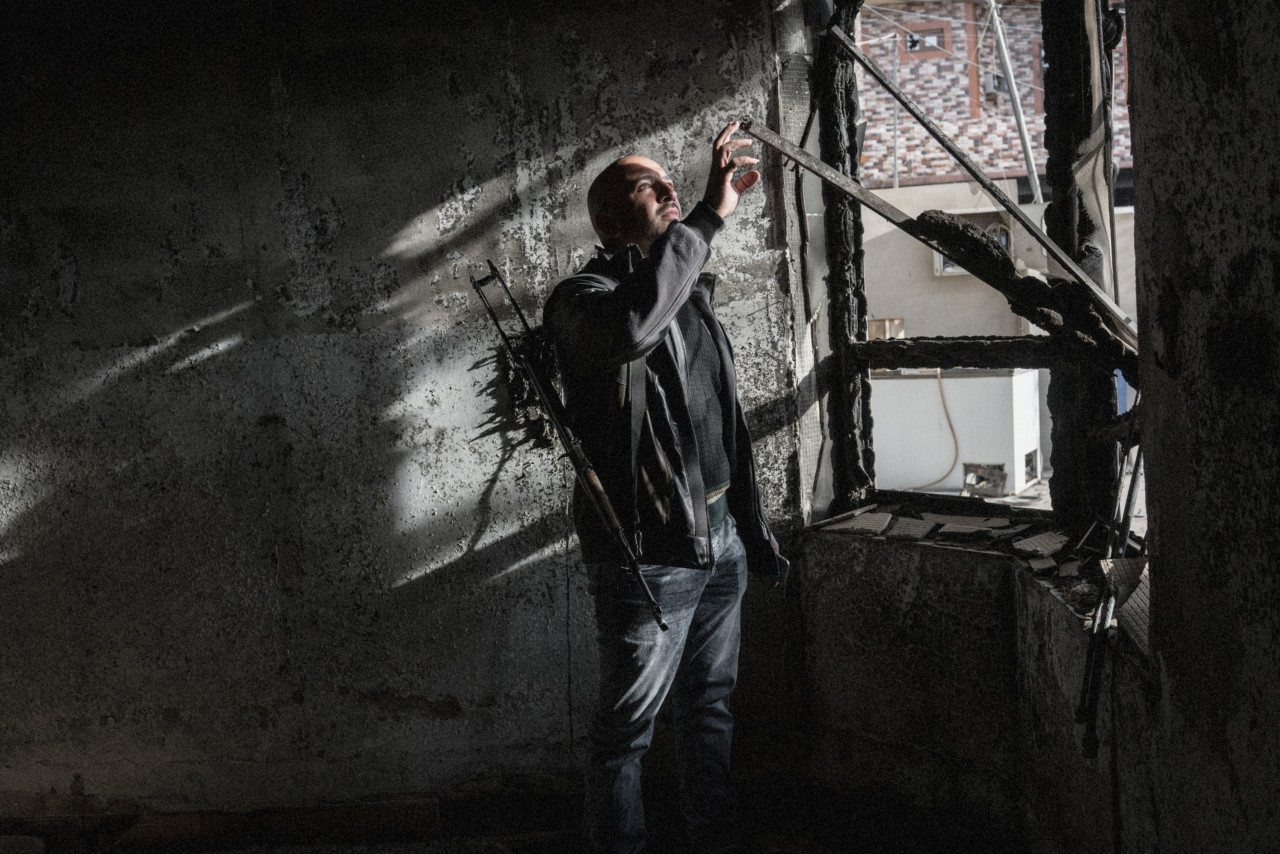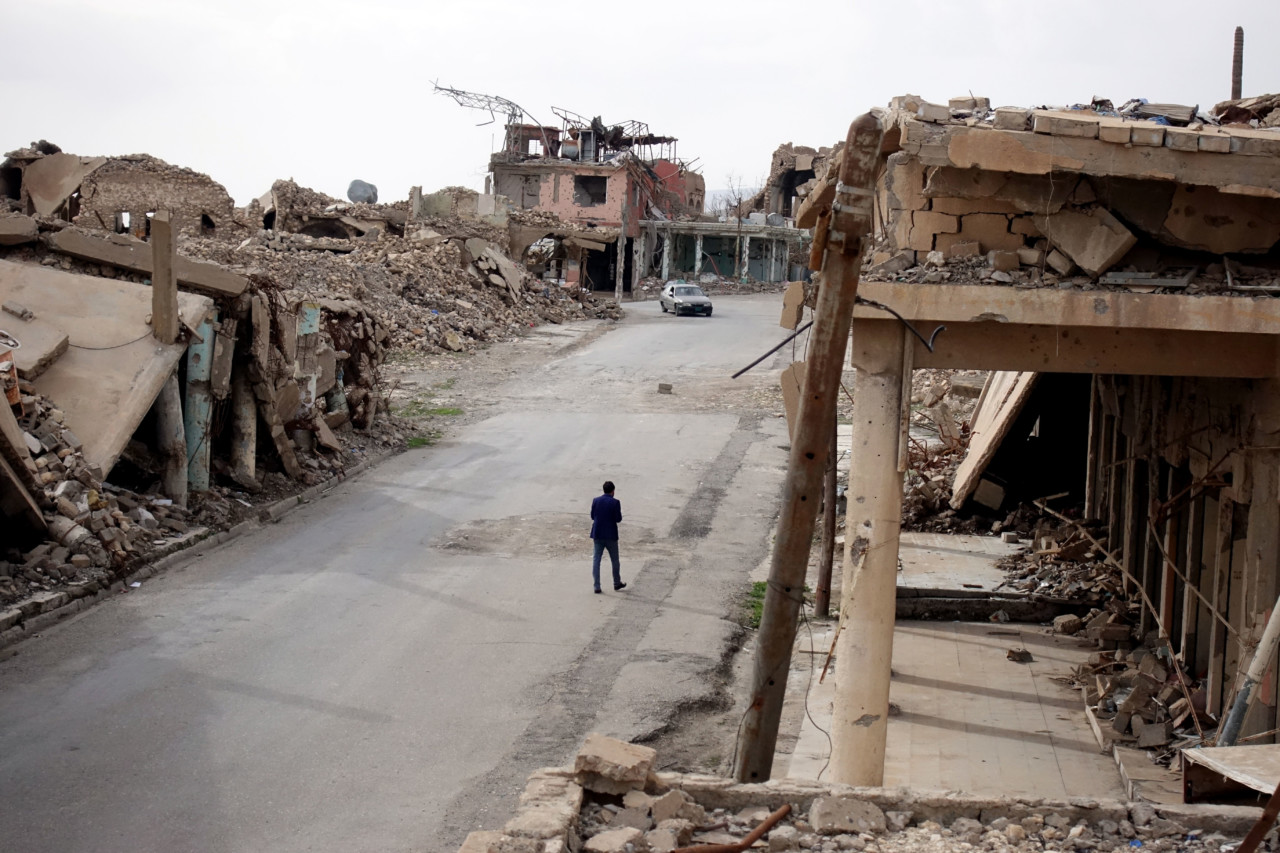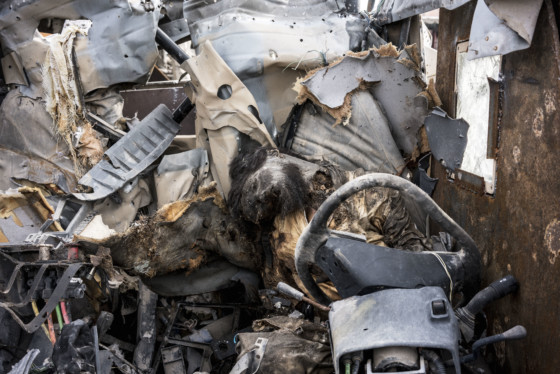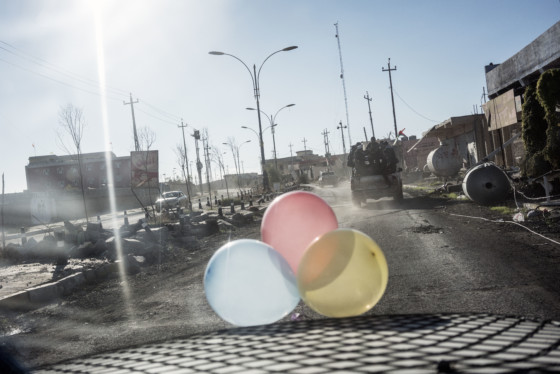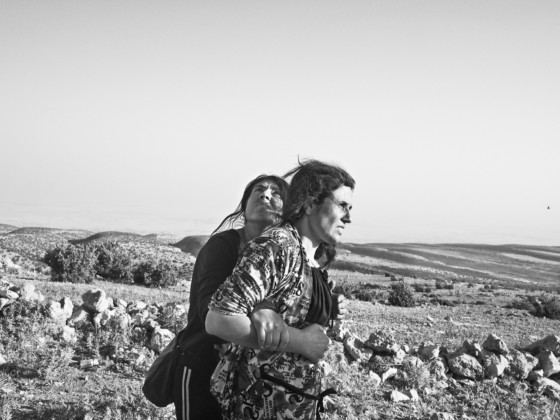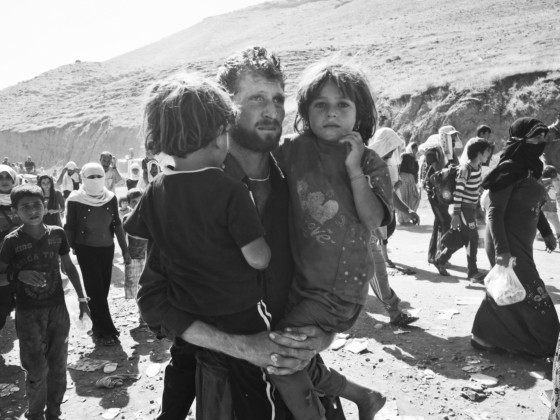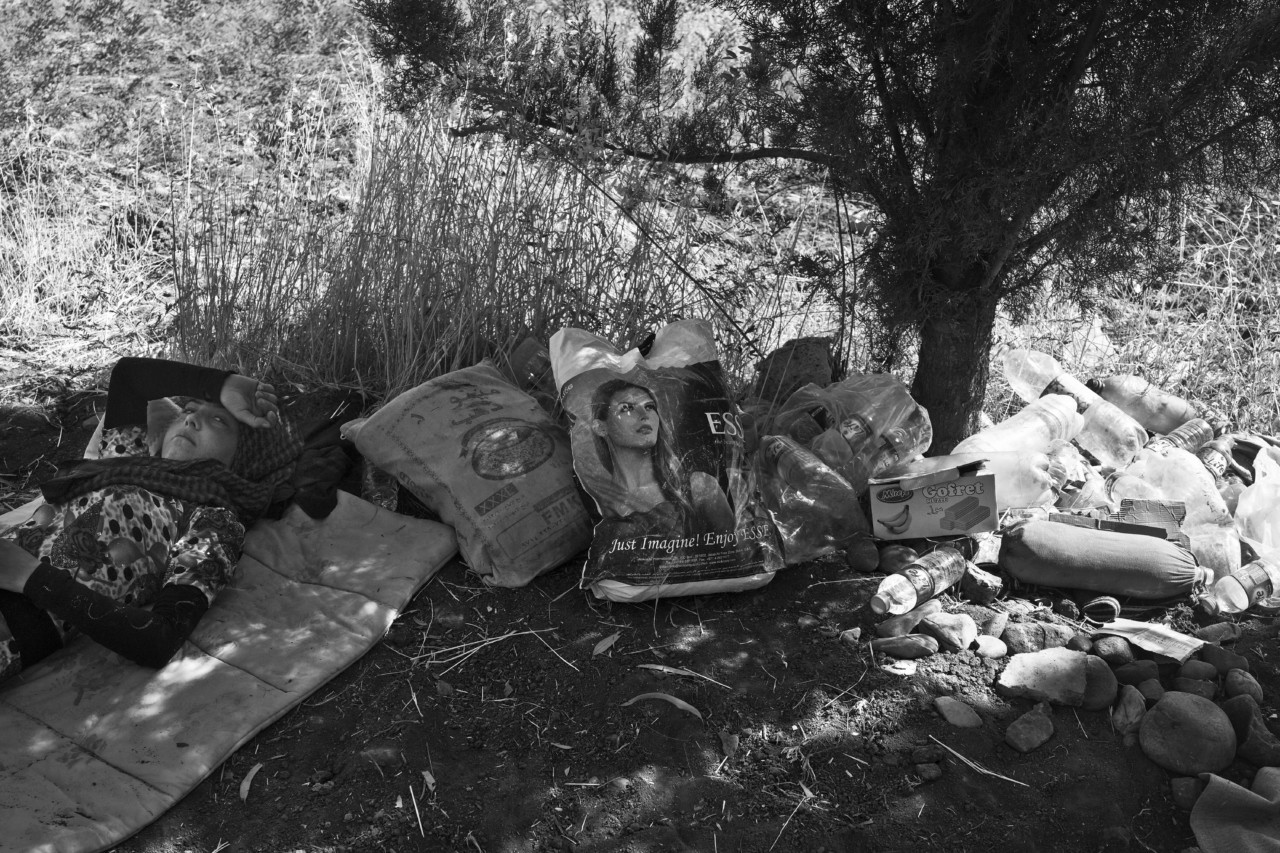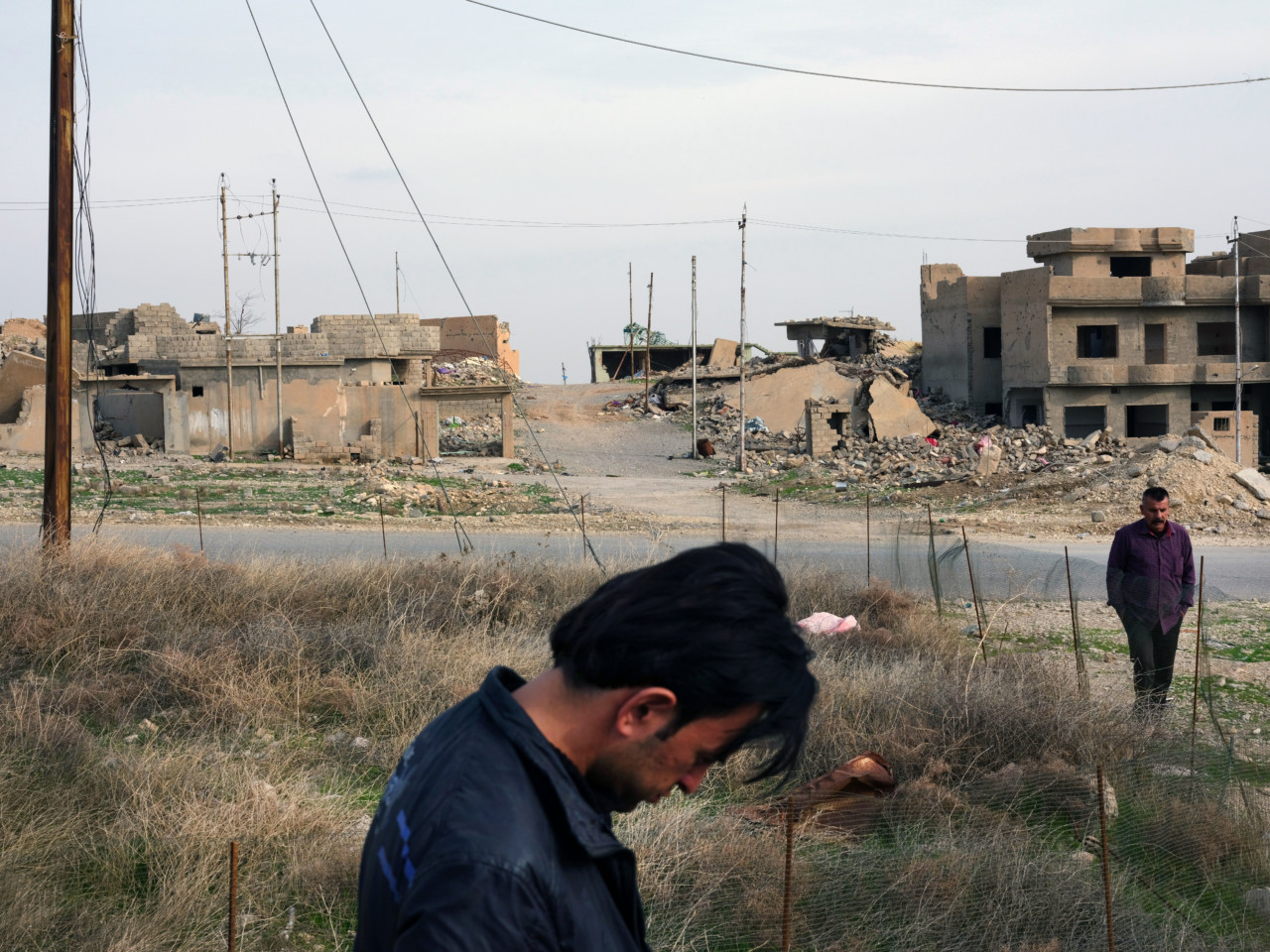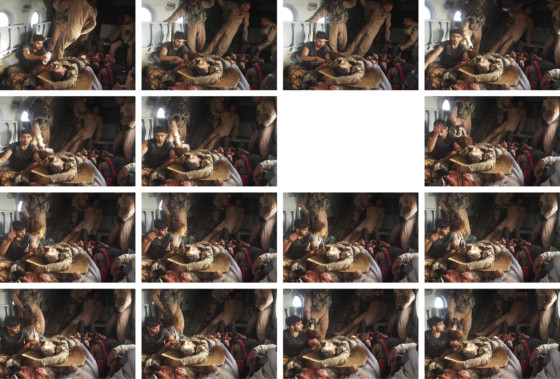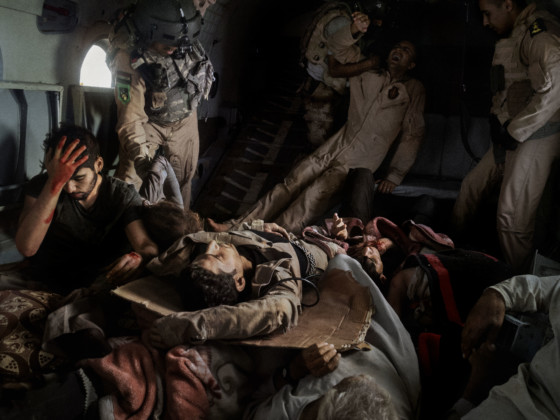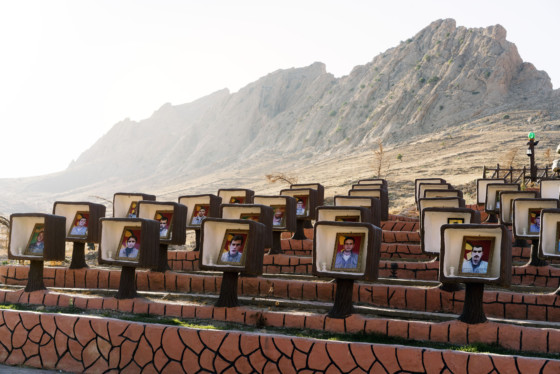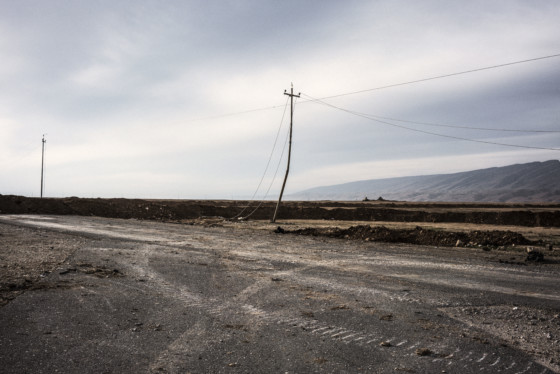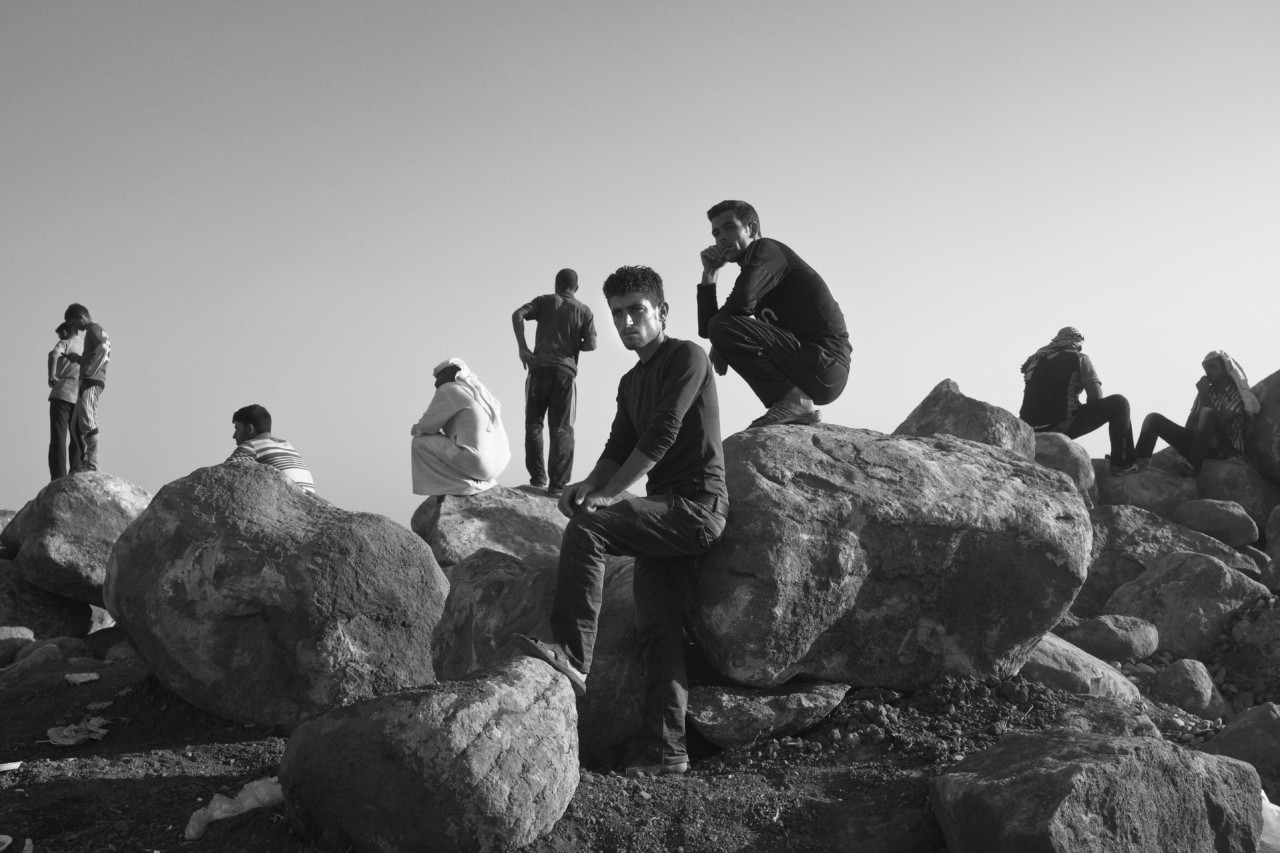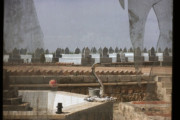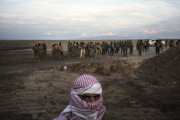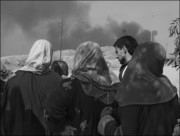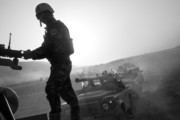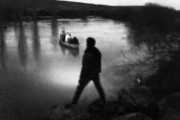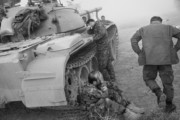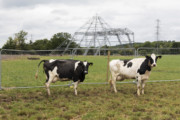The Damned of the Mountain
Reflecting upon Moises Saman's years-long work in Iraq's Sinjar province, and the struggle of its Yazidi inhabitants
Magnum photographer Moises Saman first travelled to Iraq’s Sinjar district, in 2014, to document the plight of the region’s Yazidis as part of an assignment for TIME. As the Islamic State (IS) closed in on the town of Sinjar, long a hub for the Yazidi minority in the region, its inhabitants were faced with a choice between subjugation – and likely execution – and flight.
Many of those who fled took to the nearby mountains, and specifically to Mount Sinjar, a holy site for the Yazidi sect, and more prosaically a geographical feature that offered some short-lived degree of safety. Marooned on the mountain with meagre supplies, in spite of Kurdish efforts, the refugees numbering in the thousands had to be supplied from the air. Saman was on board an Iraqi military helicopter which crashed on the mountain during this relief effort.
Saman returned to Iraq in 2015 to photograph Kurdish forces’ offensive against IS as it reached the town’s outskirts. Sinjar had been the site of cruel fighting, occupation, mass executions, and coalition airstrikes. Having been seriously damaged over preceding months, the town fell quickly to assorted anti-IS groups – primarily Kurdish militias – backed by US-led coalition airstrikes.
Most recently, in 2018, Saman photographed Sinjar’s and the Yazidi’s struggle toward a modicum of normality and reconstruction in the wake of IS occupation. In spite of comparative peace since the ejection of IS, much of Sinjar remains in ruins, laced with ordinance and landmines, and thousands of its former inhabitants are still displaced.
Here we look back over Saman’s work in the contested and blighted region, accompanied by a translated version of a text writer by journalist Carsten Stormer who was with Saman on that most recent visit to Sinjar. The article first appeared in it’s original extended version alongside Saman’s photographs in Germany’s GEO Magazine.
Saman’s work in Iraq stretches back to 2002, and will be the subject of a forthcoming photobook.
Four years ago, Islamic State began massacring Iraqi Yazidis. The city of Sinjar, in northeastern Iraq, is the spiritual and cultural heartland of the Yazidis. Here is where the future of this religious minority will be decided.
The teacher sits before a mountain of paper that refuses to get smaller. He takes a sheet from the pile, signs on the left and stamps on the right. Next sheet. Between pages, he wipes his hands on his trousers and kneads his tired fingers. It’s the first day back after the holidays. The air is stuffy in the yellowing room of the Al-Mukhtalad Comprehensive School in Sinjar.
There are 1200 students waiting for certificates to be issued. He has been working for hours with a few volunteers, young people full of energy. The men sport skinny jeans and undercuts, the women are elegant, unveiled and with lacquered nails. They are an open, fashionable declaration of war on the terrorists of IS.
Daesh, the horror word. Daesh, the Arabic name for the reign of terror under IS, the Islamic State. They have been defeated, but the memory of their atrocities clings to the city’s inhabitants like a curse. Khero Qaso Wahab is, like almost all of his students, a Yazidi.
"Daesh have been defeated, but the memory of their atrocities clings to the city’s inhabitants like a curse."
- Carsten Stormer
The Yazidis came top of all religious groups on the IS death list. This ancient, mysterious, closed religious community is accessible only by birthright. One can neither convert to Yazidism, nor marry into it. The Sunni extremists of IS regarded them as devil-worshippers – an error, given that the Yazidi religion has no devil figure. It is a monotheistic faith that originated over 5,000 years ago in Mesopotamia and has no prophets or holy texts.
An angel of light named Melek Taus is worshipped as the almighty creator, but the most unusual aspect is that, in Yazidi belief, only good and no evil flows through him. The irony of this is that their religion has been persecuted for hundreds of years: the siege of Sinjar is considered the 74th genocide in their history.
The centuries passed like a robber baron novel. First the invasion by the Arabs in the 7th century. Even then, the mountain of Sinjar offered refuge to the persecuted. After the Arabs came the Mongols, in the 13th century. In the 17th century, the Ottomans tried to exterminate the Yazidis. The mountain, an impregnable natural fortress, always offered shelter from marauding invaders.
After the first Gulf War in 1991, the Yazidis received for the first time special rights within an autonomous Kurdistan. They were allowed to build their own schools to teach their own history and to practice their religion. In August 2014, the murderers of IS fell like a biblical plague on the Yazidis, killing tens of thousands of them, raping and displacing thousands more. It was an event of such terrible force that its momentum will be felt for generations into the future.
"Decimated by persecution and expulsion, there are around 800,000 Yazidis left. 650,000 of them live in Iraq"
- Carsten Stormer
Decimated by persecution and expulsion, there are around 800,000 Yazidis left. 650,000 of them live in Iraq. The biggest diaspora group is in Germany, where around 120,000 have settled. A few tens of thousands are spread between Russia, Syria, Georgia and Armenia.
Iraq is their historical and religious homeland. It is believed that the Kurds were originally Yazidis that converted to Islam. Today, their descendants wish their forefathers had chosen to live somewhere other than the land, torn by war, resentment, corruption and religious zealotry, between the Tigris and the Euphrates – a permanent crisis spot where, since the Americans left in 2011, the religious and ethnic groups have rubbed against each other like tectonic plates before an earthquake.
Shia against Sunni, Sunni and Shia against Kurds. Everyone variously against everyone else. Only recently have the Shia, Sunni and Kurds had a united front to rid themselves of the madness of IS. Half the country was reduced to rubble. No sooner was the IS ghoul exorcised than the Kurdish cry for an independent country brought Iraq back to the brink of civil war. The Yazidis are stuck in the middle of this political and religious muddle.
One can observe the homeland of the Yazidi, Sinjar, from three places to show how deep they sit: from the small pilgrimage site, where a Yazidi general feels surrounded by enemies; from the ruined city of Sinjar itself, on the northern flank of the mountain of the same name, in which, three years after the expulsion of IS, a timid piece of normality is returning and from in a refugee camp on the plateau of the mountain, where 13,000 refugees live in a tent city, having lost all hope of a liveable future.
"At the foot of the northern side of the Sinjar mountain lies the town of the same name, where once 40,000 people lived; today little more than a ghost town slowly returning to life"
- Carsten Stormer
Even getting to Sinjar is a logistical nightmare. The areas liberated from IS can only be reached with permission from the Kurdish autonomous administration and a visa from the Iraqi government. The traffic stops at dozens of checkpoints, where sullen sentries inspect passports with skeptical looks. It is a long and dangerous journey through the battlefields of recent years.
From the Kurdish capital of Erbil, over the Tigris, through the bombed-out Mosul, over destroyed bridges, past the tomb of Jonas and the smashed Al-Nuri mosque, all the way to Tal Afar, the last Iraqi city from which IS was expelled. Sleeper cells in the area still carry out attacks in the area, killings sentries and soldiers and kidnapping Kurds and Shias. After one leaves Tal Afar behind, one travels over country roads and through a deserted No Man’s Land along the Syrian border.
From the window, emptied villages and destroyed houses pass by. After four hours driving, the massif of a table mountain appears out of the dust on the horizon. At the foot of the northern side of the Sinjar mountain lies the town of the same name, where once 40,000 people lived; today little more than a ghost town slowly returning to life.
Since his city was liberated from IS, political arguments have taken over instead of a united strategy for the future of Yazidis, with each group interpreting the situation in their own way. Each took over their district of the city with the flags and colours of their party: the yellow flags of the PDK, the Kurdish party; the red and green flags of the Yazidis with the temple of Lalish on them; the yellow and green banner with the star of the PKK and their connected Yazidi organisation, the People’s Defence Units (YBS); the red-white-red flags with the star of Hêza Parastina Êzîdxan (HPE), the Yazidi citizen’s defence. And above all, the rising sun on the flag of Kurdistan, fluttering in the wind.
" Above, on the mountain is heat, cold, hunger and misery. Below are mines and ruined houses that shape the landscape like mushrooms. In between are enemies lurking everywhere"
- Carsten Stormer
The cemetery marks the start of the refugee camp. Serdaschte: the six kilometres of misery along the plateau of the mountain. For three years, 2025 families have lived here, a total of 13650 people. IS has been expelled, but even without the terrorists, this is still a hostile place. In high summer the temperature reaches fifty degrees, in winter icy winds blow through, while in between, rain turns the ground into a morass.
It is as if the people up the mountain are stuck in a time warp, where past, present and future overlap, mingle and connect. Above, on the mountain is heat, cold, hunger and misery. Below are mines and ruined houses that shape the landscape like mushrooms. In between are enemies lurking everywhere. People don’t know where to go. “Only here, up on the mountain, do we feel secure,” says the camp leader. Where is the future for Yazidis?




